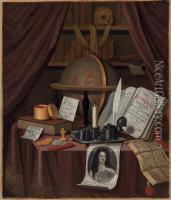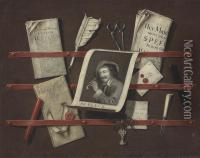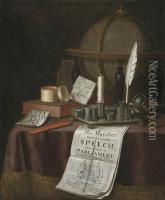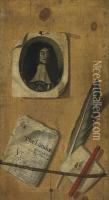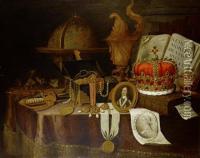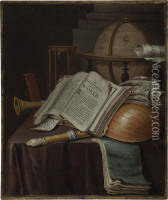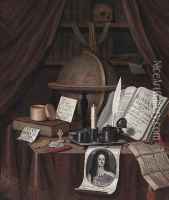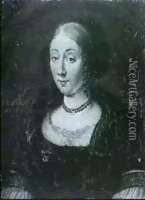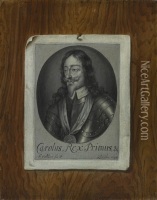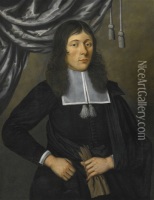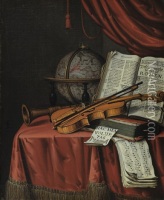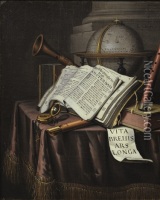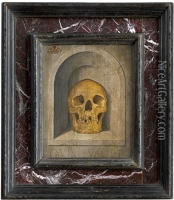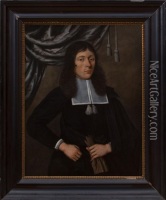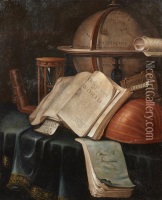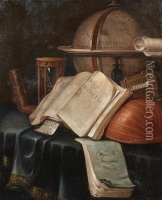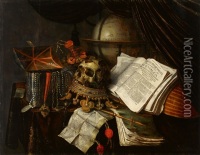Edward Collier Paintings
Edward Collier, also known as Edwaert Collier or Evert Collier, was a Dutch Golden Age painter who is best known for his vanitas still-life paintings and trompe-l'œil works. Born in Breda, a city in the southern part of the Netherlands, around 1640, Collier's early life and training as an artist are not well-documented, but he is believed to have started his career in Haarlem, where he became a member of the Guild of St. Luke.
In the later part of the 17th century, Collier moved to England, where he spent a significant portion of his career. His move to England was likely motivated by the country's growing market for still-life paintings and the opportunity to reach new patrons. In London, he produced many of his finest works, which often featured cleverly arranged objects designed to deceive the viewer's eye and challenge their perception of reality.
Collier's paintings often included a range of symbolic items, such as musical instruments, books, and skulls, which were common in vanitas paintings that reminded viewers of the transience of life, the futility of pleasure, and the certainty of death. His trompe-l'œil paintings took this a step further by creating the illusion that the depicted objects were actually three-dimensional, often extending out of the frame or appearing to rest on the surface of the painting itself.
Although Collier was not the most famous painter of his time, his work was well-regarded, and he contributed to the development of still-life and trompe-l'œil genres. His meticulously detailed and realistic representations served as both a visual delight and a philosophical meditation on the nature of truth and illusion. Collier's paintings can be found in various art collections and museums around the world, and they continue to be studied for their technical skill and conceptual depth.
Edward Collier died in 1708. The exact circumstances of his death are unknown, but his legacy as an artist remains secure through the works he left behind, which continue to captivate and intrigue audiences with their beauty and complexity.
